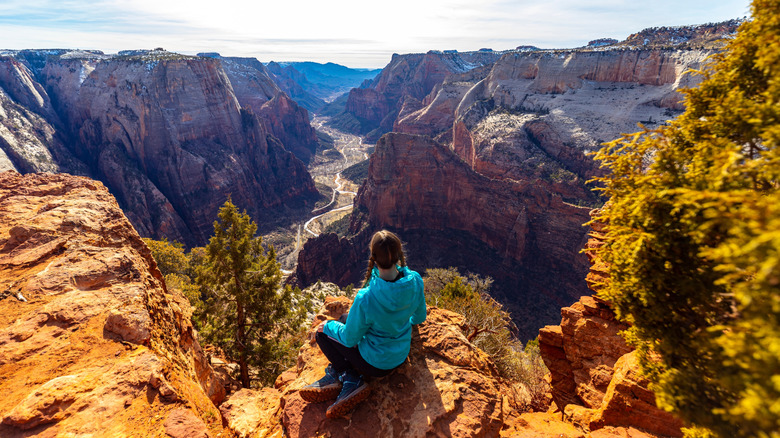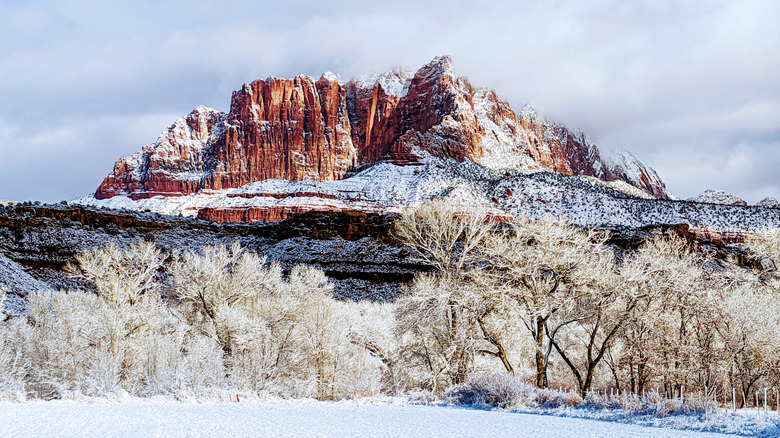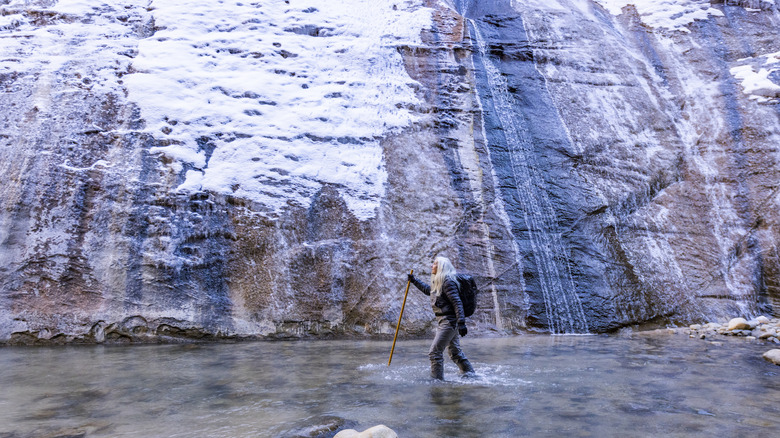The Underrated Time To Visit Zion National Park For The Same Iconic Hikes With Less Crowds
The iconic Zion National Park is famous for its incredible views and thrilling hiking trails, but it's also packed with sightseers. To avoid crowds, some people actually skip Zion for more underrated Utah parks, but if you have your heart set on this particular location, you may have to compromise on weather and temperature. If you're willing to take your trip in the winter, you will definitely find a chillier park — but you might also find some isolation amongst the occasionally snowy cliffs of Zion.
Zion is one of the many national parks that get so hot that they can be dangerous in summer, especially for hikers. While temperatures can drop below freezing at night, during the day, you might get to enjoy temperatures in the 50s. Frequent rain, closures, and icy trails are definitely risks, but for some, exploring Zion National Park without having to compete for the views makes the prospect of a December, January, or February trip worth it.
Where to winter hike in Zion National Park
Exactly which hikes you should choose depends on your level of experience and preferences and what the weather conditions are like during your visit, but there are a few options you should definitely consider. If you don't mind a muddy slog, The Watchman is a great choice for a winter hike through Zion National Park. Looking out over the valley is a gorgeous sight any time of year, but if you do it in winter, you won't have to wait for your turn to take a picture. Another great option is the short, steep Weeping Rock hike, which most complete in under half an hour. If it's cold enough, you might be rewarded with an incredible winter formation: a wall of icicles. If the trail itself gets icy, though, it's likely to close, so hikers will have to hope for the perfect conditions.
Despite its deadly reputation, Angel's Landing is an iconic hike in Zion, and the National Park Service actually runs a lottery to hike it in the wintertime through recreation.gov. While it may be technically open, hiking the final half mile of the trail is not particularly safe when there's ice, so if you decide to attempt this famous trek, be prepared to turn back early. If you're hoping to traverse an old favorite but don't want to risk Angel's Landing, consider Observation Point instead. This is an all day trek that will have you on the trail for around six hours, but it will take you up switchbacks to the park's highest point to enjoy absolutely stunning views spread out below you.
How to enjoy a winter trip to Zion
You don't have to worry about getting caught in a major snowstorm in Zion National Park. It usually only snows a few times a year, and it's rare for snow to stick for long in areas where the sun shines. Zion's unique landscape looks particularly beautiful with a dusting of snow, so as long as you pack layers, you should be able to enjoy it comfortably. The main downside of hiking in the winter at Zion is the risk that trails may have to close due to hazardous conditions — though missing out on a hike you've been dreaming of is a lot better than encountering a flash flood. Keep an eye on park conditions and check with a park ranger before attempting any hiking trails that might get slick or icy. You may also want to prepare for winter conditions by getting hiking boots with traction.
If you're looking to beat the crowds, though, make sure not to schedule your trip during the holidays. While winter is quieter overall, many families take advantage of Christmas break to head to national parks like Zion, so you might end up having more competition for trails than you expected.


